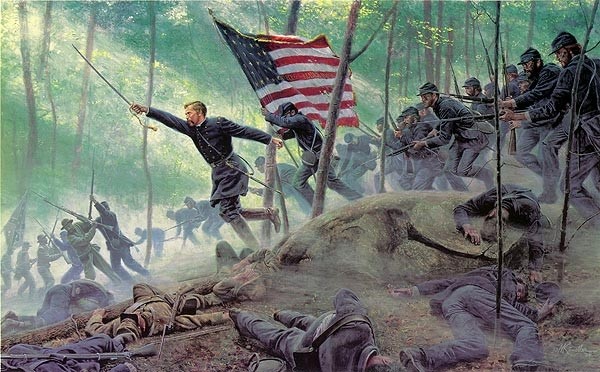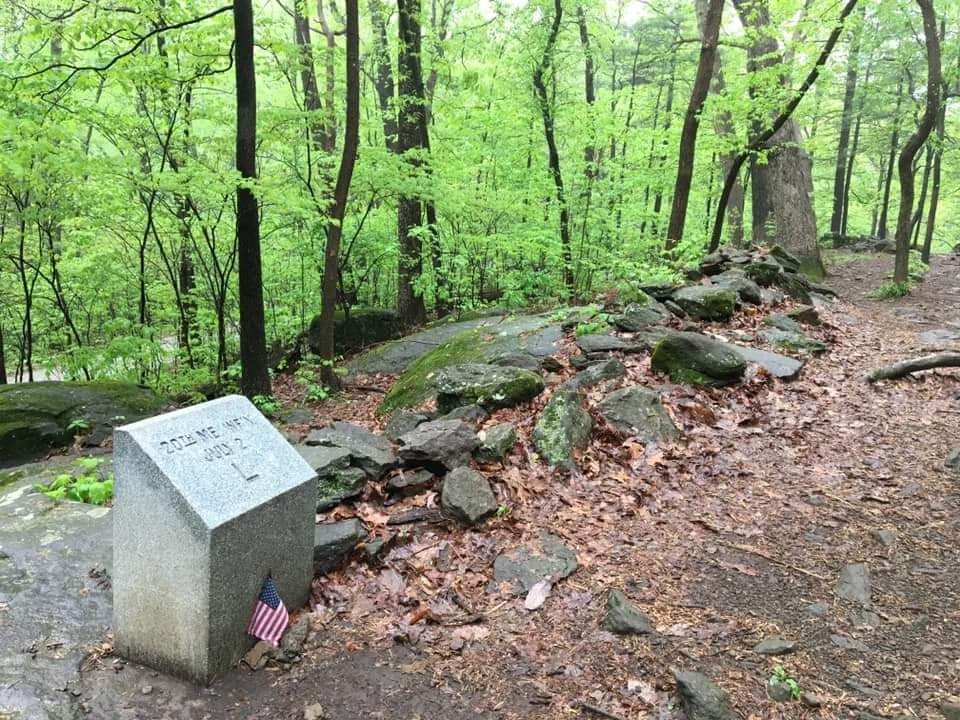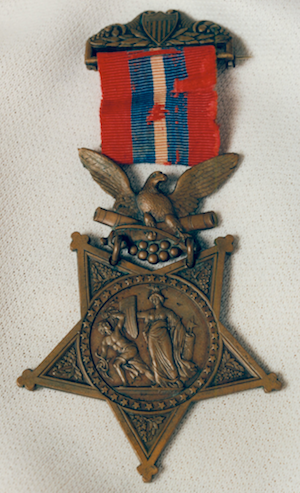On Little Round Top, COL Vincent’s men struggled up the steep boulder-strewn slope. Once at the top, he began to align them north to south as each regiment reached the crest. The last unit to arrive was the 20th Maine under the command of LTC Joshua Chamberlain. Vincent himself led Chamberlain into the dense woods that covered the southernmost end of LRT. He impressed upon him the fact that the 20th Maine was now the extreme left flank of the Union position and that Chamberlain had to hold that position “at all costs”. He could not allow any rebels to advance north!
We now harken back to the fourth T = Timing discussed in Section 2 above. For just as the 300 men of the 20th Maine settled behind any rock or tree that provided them cover, the men of the 15th Alabama were climbing the slope.
The hours-long clash between these Alabamians — reinforced by the 47th Alabama regiment — and men from Maine has been the subject of numerous books and in-depth analyses. Chamberlain, himself, wrote extensively about those hours. We have nearly a minute by minute account of what transpired. But it was the culminating action for which Chamberlain was awarded the Medal of Honor. By dusk, after repelling repeated attempts to breech his line, Chamberlain’s men were all but spent; as was their ammunition. Messengers sent to secure more ammo returned empty-handed. There was none to be had. Plus COL Vincent lay dead among his artillerymen.
In one last desperate attempt to drive the Alabamians back, Chamberlain ordered a bayonet charge down the slope into the heart of the Rebel regiment. But they too were spent! The slope that had repeatedly scaled was so steep that they often had to pull themselves up using the trees as levers. They could only halt and brace themselves to fire and reload their weapons. They had had only the water they carried and that was consumed early on. The survivors of the 15th Alabama were exhausted. Like a door swinging across the south slope of LRT, the men of the 20th Maine swept the hillside clear of the Rebels. Those who could fled. Many were captured. They laid down their arms and surrendered. The extreme left flank had held. The Union line was secure. Chamberlain was one of the most recognizable names to come out of the battle.

The primary reason for the existence of the American Battlefield Trust is to preserve the battle fields across American in as close to their condition at the time of the battle as is possible.

This one frame at Gettysburg shows how they have done so.
Just about every account of the clash that took place on the extreme left flank of the Union line at Gettysburg on the afternoon of 2 July speaks to the steepness of the slope that the 15th Alabama Regiment had to scale as they assaulted Joshua Chamberlain’s 20th Maine Regiment. They tell of how the Rebels had to use the saplings as hand-holds to pull themselves forward and having to prop themselves against the trees to aim and fire their weapons.
We can see this clearly in this photo of the left flank as it exists today.
A Medal of Honor

CHAMBERLAIN, JOSHUA L.
Colonel, 20th Maine Infantry. Place and date: At Gettysburg, Pa., 2 July 1863. Entered service at: Brunswick, Maine. Born: 8 September 1828, Brewer Maine. Date of issue: 11 August 1893. Citation: Daring heroism and great tenacity in holding his position on the Little Round Top against repeated assaults, and carrying the advance position on the Great Round Top.
The full citation of his award is not available. You’ll note that it was awarded for his actions on 2 July 1863 but wasn’t issued until 1893! It was presented in the Governor’s Office after it had been mailed to him.
What might have been
One of the many Union regiments that participated in the fierce defense of Little Round Top on the late afternoon and early evening of July 2 was the 16th Michigan Infantry commanded by Colonel Norval E. Welch. The 16th Michigan Infantry Regiment was one of the four regiments in Colonel Strong Vincent’s Third Brigade in MG James Barnes’ First Division of LTG George Sykes’ Union V Corps, the other regiments being the 20th Maine Infantry Regiment, the 44th New York Infantry Regiment, and the 83rd Pennsylvania Infantry Regiment.

The 16th Michigan Infantry Regiment sent out two companies as skirmishers, Company A and the Michigan First Company of Sharpshooters (known as Brady’s Sharpshooters), and immediately encountered enemy fire. According to Colonel Welch’s Official Report of July 6, his troops “remained in position for nearly half an hour when someone called from the extreme crest of the hill to fall back nearer the top where a much less exposed line could be taken up.” Some of the regimental color guard and roughly 40 other soldiers obeyed this “order” while the remaining men held their positions. While it is true that the regiment fought that day on the extreme right flank of the brigade, it was originally ordered by Colonel Vincent to form on the extreme left flank of the brigade. For some reason, however, Colonel Vincent soon changed his mind and ordered the 20th Maine Infantry Regiment to instead take the extreme left flank of the brigade (and of the entire Union Army), and as they say, the rest is history.
It should also be noted that the 16th Michigan Infantry Regiment, originally formed in September of 1861, served in over 50 other engagements and major battles during the war including the Battles of Antietam, Fredericksburg, Chancellorsville, the Wilderness, Spotsylvania, and Petersburg. Sadly, Colonel Norval E. Welch (shown above) was killed in action on September 30, 1864.
